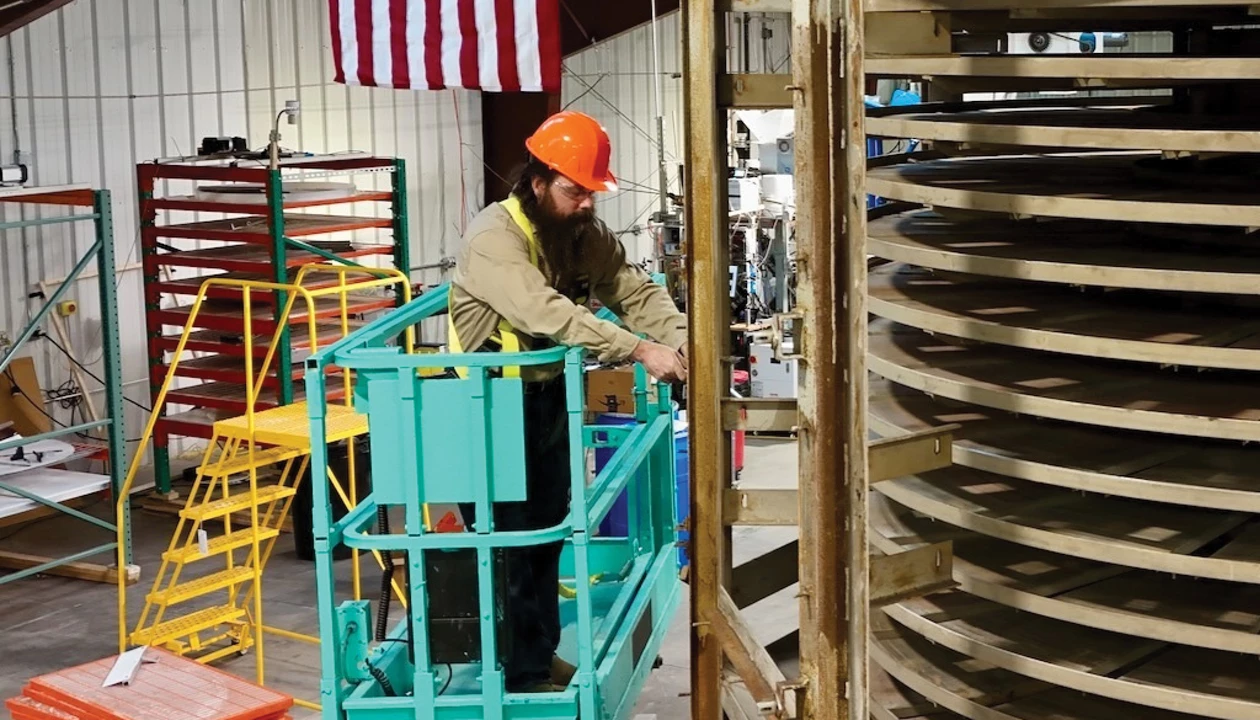At a Glance
Publicly launched: 2023
Headquarters: Los Alamos, New Mexico
Focus: Direct air capture of carbon dioxide
Technology: Low-cost nanostructured polymer sorbent
Founders: Charles Cadieu and Matt Lee
Funding or notable partners: $41 million from Aramco Ventures, Khosla Ventures, Mitsubishi Heavy Industries, TDK Ventures, and other investors
Matt Lee had been creating nanostructured materials for all sorts of applications at Los Alamos National Laboratory for 10 years when his friend Charles Cadieu came to him with the idea of removing carbon dioxide from air. Direct-air-capture (DAC) technology was gathering steam, and Climeworks was about to launch the first large-scale DAC facility, in Iceland.
Lee knew he had just the materials technology needed to address the “grand challenge” of DAC at a fraction of the Iceland facility’s cost. “It was serendipitous that I was developing materials with next-generation performance but incredibly low-cost, simple manufacturing,” the chemical engineer says.
Lee and Cadieu, who already had two successful start-ups under his belt, founded Spiritus in stealth mode in 2022. The company, named after the Latin term for “breath,” is on pace to capture 1,000 metric tons (t) of CO2 at its pilot facility on Nambé Pueblo tribal land in New Mexico by early 2026.
“In many ways, we are letting nature do the heavy lifting here by assembling an intricate structure for us.”
Matt Lee, chief technology officer, Spiritus
Current commercial DAC facilities use giant fans to blow air over sorbents that soak up CO2 and then need high temperatures to release the trapped gas for permanent storage or for use. The process ends up costing $600–$1,000 per metric ton of CO2, according to the World Economic Forum. Using a sorbent that passively pulls CO2 from air, Spiritus aims to shrink that number to $100 per metric ton, a benchmark for viability set by the US Department of Energy.
Lee, now chief technology officer at Spiritus, specializes in colloid science and complex fluid engineering. As a graduate student at the University of California, Irvine, he invented a way to assemble polymers into intricate structures that have networks of interconnected macro- and nanoscale pores. This gives the material very high permeability and surface area, he says. Tennis ball–size spheres of the sorbent have the surface area of a tennis court. That means CO2 flows through quickly and has lots of sites to attach to.
The material self-assembles from a colloidal solution in which tiny particles of one material are suspended in another. “In many ways, we are letting nature do the heavy lifting here by assembling an intricate structure for us,” Lee says.
At Los Alamos, he used the technique to make porous materials for catalysts and for fusion energy fuel pellets. The pivot to DAC brought the challenge of scaling up production cost-effectively. “You need a lot of sorbent for DAC,” Lee says. “If the process to create it is too expensive or cumbersome or esoteric, the economic picture starts to get hazy very quickly.”
Two people stand in front of a field of grass.
Spiritus cofounders Charles Cadieu (left) and Matt Lee
Credit:
Spiritus
Luckily, he had already been working with a manufacturing plant outside Kansas City, Missouri, during his time at Los Alamos. Some of the personnel from that facility have now joined Spiritus, bringing their expertise in taking a laboratory innovation to full-scale production of hundreds of kilograms of sorbent a week. Spiritus plans ultimately to scale up to thousands of kilograms per week.
Lee says Spiritus’s DAC sorbent is made from easily available raw materials. Active sites on the polymer adsorb CO2. Releasing the captured gas requires heating the sorbent to temperatures of 70–100 °C, less than what other known DAC sorbents need. The material also has many times the carbon capture capacity of anything commercially available at a similar cost, Lee says. “I sometimes joke that it’s the sorbent decathlon. Being excellent in one attribute, say capacity or cost, doesn’t work. You have to be excellent across all categories to win the decathlon.”
Cadieu and Lee plan to put money from their recent $41 million fundraise toward growing Spiritus’s first full-scale DAC facility, Orchard One, in central Wyoming. The “orchard” will be planted with treelike structures bearing tennis ball–size sorbent spheres that can be removed once they have soaked up carbon. Time magazine recognized the concept as one of the best inventions of 2024.
Slated to be the world’s largest DAC plant, Orchard One will capture 2 million t of CO2 annually, equivalent to the emissions of about 340,000 pickup trucks. (By 2050, up to 10 billion t of carbon dioxide needs to be removed from the atmosphere each year to achieve net zero, according to the World Economic Forum.) Spiritus is partnering with Casper Carbon Capture to inject the captured CO2 into a deep underground rock formation. In the future, it might work with companies making sustainable fuels from captured CO2.
Prachi Patel is a senior editor and physical sciences reporter at C&EN based in Pittsburgh.
Chemical & Engineering News
ISSN 0009-2347
Copyright ©
2025 American Chemical Society


